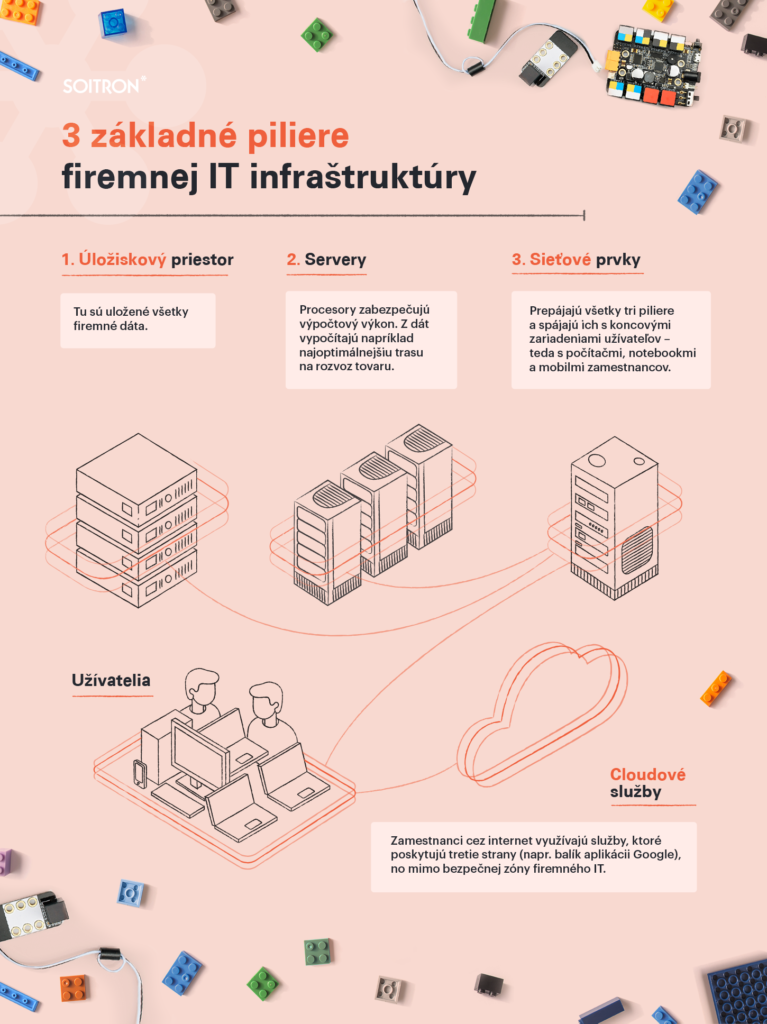
When we look at managers and the world of IT, we often hear about the disconnect between the two. But let’s start with something they have in common – there are few other functions in a company that would be subject to so much cursing and gossiping by employees than managers and IT staff. However, there are many other reasons that make them ideal allies. Paradoxically, the most important reason is company development and competitiveness.

The following article is intended for managers who do not understand their IT staff – be it their own employees or an external provider taking care of hardware, software, data, and applications. Few companies can afford not to have such people. Indeed, for more and more companies, the interplay between their IT department and top management decides whether they survive and enjoy success or get technologically outperformed by their competitors. Together with consultants from Soitron, we have prepared the following list of myths about corporate IT.
“Managers often complain that there is a mismatch between IT investments and their actual benefits for the company,” says Zbyszek Lugsch, who helps companies improve their technological base. “This is often because companies are unable to quantify their dependence on IT, and this is despite the fact that their core business often depends on it. Today, for many companies, their IT essentially generates revenue.”
According to Lugsch, this misconception has historical roots. In the past, IT staff were perceived more like maintenance workers. Today – when even technologically conservative industries such as manufacturing, engineering, and heavy industry are undergoing the process of digitalization – the role of IT specialists is different. “Our added value is not that we would take and configure something but rather that we come to a company and think about how it operates and how it could work more efficiently without IT being a barrier.”

Lugsch believes that cloud solutions have made cost efficiency calculations easier, because in a few clicks a company can easily choose storage, servers, and other services – such as a warehouse database or a mail server. However, Lugsch says that such a simplified calculation of the price of partial services distorts the total long-term costs. In this respect, the cloud can actually turn out to be more expensive.
“Let’s take the example of a local manufacturing plant that produces parts for car manufacturers using a ‘just in sequence’ system [i.e. parts arrive at the assembly line exactly at the moment they are needed]. They have their information system in a data centre in Germany. Can you imagine what would happen if they lost connectivity to Germany? Their production would stop. In their case, this would mean fines that they have no chance of paying,” Lugsch says in describing a typical example. The company solved the issue by creating a local “mini-data” centre with a copy of their central information system. According to Lugsch, there are many such cases. Most companies need at least one application critical to their business, and they certainly need data availability.
“It is important to realize that what data centres usually guarantee as part of their basic package is 99.9% service availability rather than data availability,” says Lugsch’s colleague Štefan Pater. “Services include things like email. It will run with 99 per cent availability – i.e. the mail server may be down for only a few hours a year. However, the availability of company data, such as the data you have stored in your SharePoint, is something entirely different. Information about data availability is often hidden somewhere deep in the small print. If you manage to find it, you realize how much it would cost you to ensure the 99 per cent availability of your files. As a result, you need to either create some backup scenarios so that you can restore the data, or you need to buy another service. And suddenly the price is in a totally different ballpark.”
In the past, a company’s IT infrastructure consisted of three separate parts – data storage, servers providing computing power, and networking. Such hardware, which was physically located and connected somewhere in the corporate server room, is referred to as the “traditional architecture”. Building such an architecture was certainly an intensive investment, and because of this many companies decided to move their servers and data to the cloud. But then they started to experience problems with application speed, data availability, and often also with price. A hyperconverged infrastructure emerged in the meantime as a new innovation. This is often cheaper, although paradoxically it is an on-premises IT solution. The original three parts of the IT infrastructure remain, but now they are integrated into a single “box” with unified and automated management.

“Hyperconverged solutions have brought the price of on-premises solutions down so much that when I compare the cost of the same computing power, servers, storage, and so on in the cloud, and I also include management costs, I realize that having my own on-premises infrastructure would be actually less expensive. In other words, a company could benefit from more power than in a cloud for the same money.”
“No one wants to spend more money on IT than is necessary. And even if they wanted to, there is a lack of skilled people in the market. In large companies, the teams are larger but they are not growing either. The shortage of people with necessary skills impacts them even more,” says Marianna Richtáriková, an IT network expert at Soitron.
“Finding capable IT people is a real problem these days,” says Lugsch. However, claims of “the end of IT departments” in magazine headlines at the peak of the cloud craze have proved to be overoptimistic. “Over time, it proved to be total nonsense. Paradoxically, this was all the more apparent with smaller companies.”
We are in the process of finalizing. If you want to be redirected to our old version of web site, please click here.